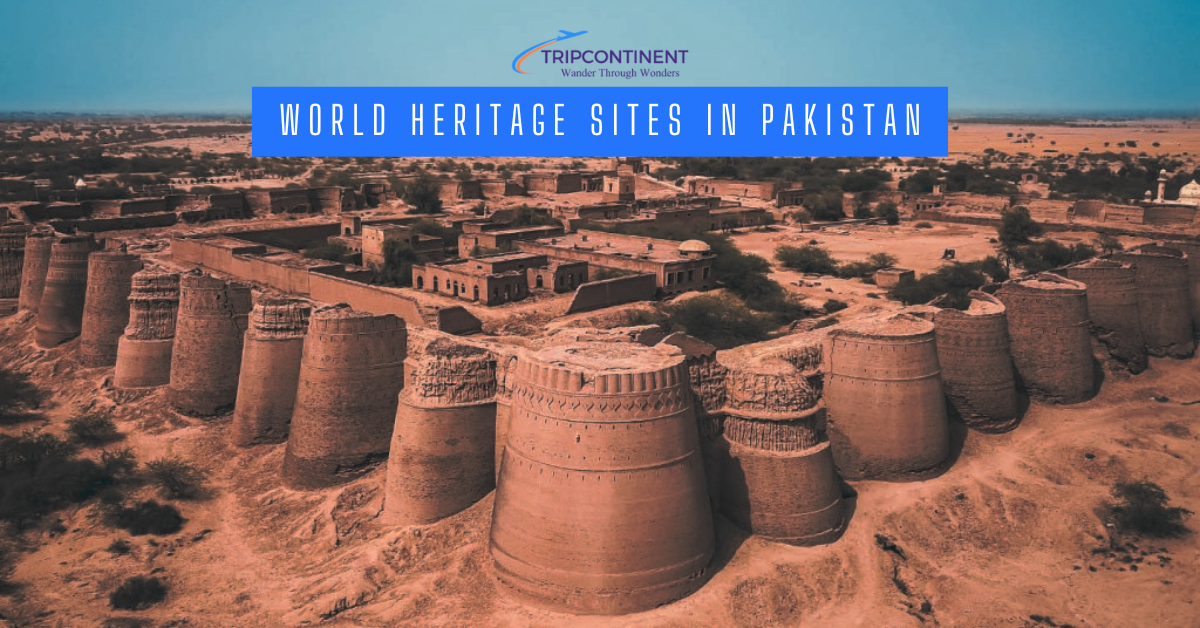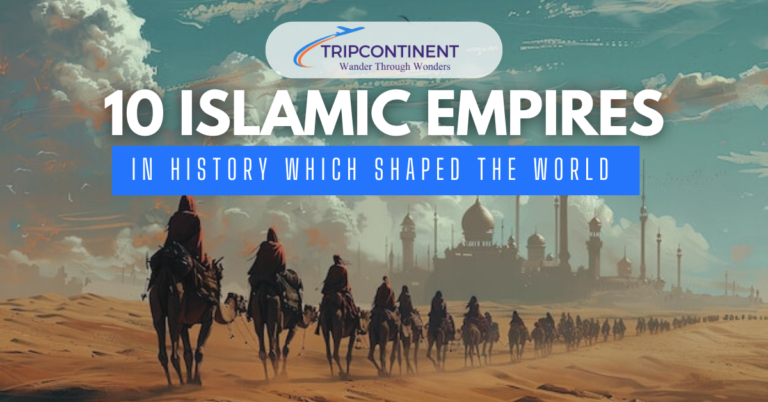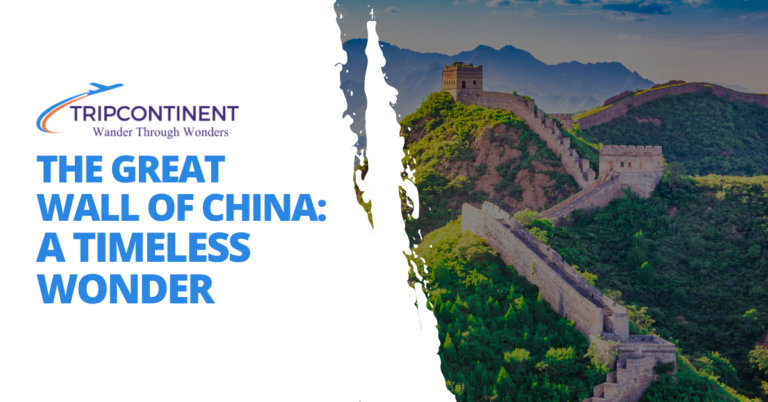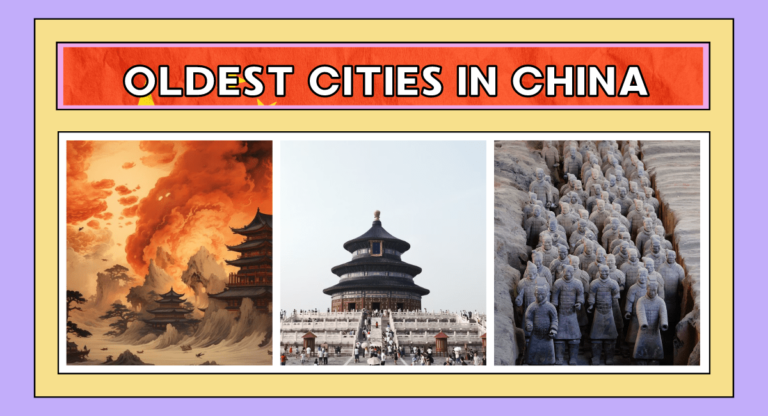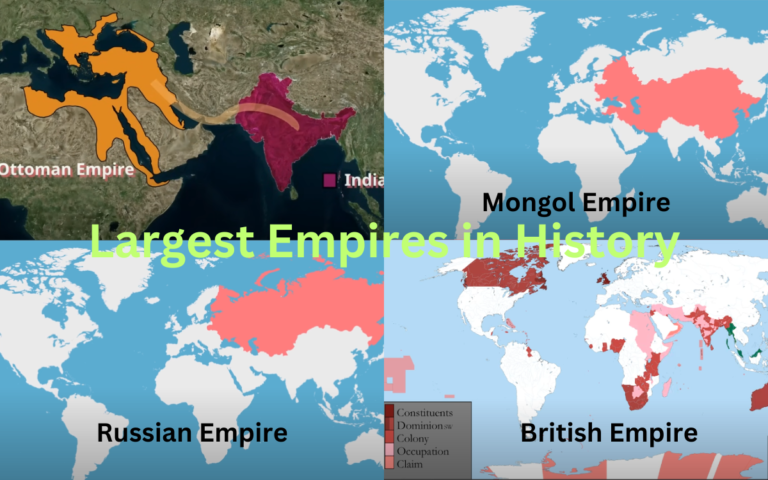A Journey Through the World Heritage Sites in Pakistan
Pakistan, a land of ancient civilizations and breathtaking landscapes, is home to several UNESCO World Heritage Sites. These sites are important not only for their historical and cultural significance but also for their contribution to the country’s economy and tourism industry.
In this blog, we will explore some of the most fascinating World Heritage Sites in Pakistan. We will delve into their history, architecture, and cultural significance, and learn about the stories they tell about the people who lived there.
Whether you are a history buff, a nature lover, or simply curious about the world around you, there is something to discover and appreciate in Pakistan’s World Heritage Sites. Continue reading!
List of the World Heritage Sites in Pakistan
The following is the list of the World Heritage Sites in Pakistan.
- Mohenjo Daro
- Taxila
- Takht-i-Bahi and Sahr-i-Bahlol
- Lahore Fort and Shalamar Gardens
- Makli
- Rohtas Fort
1. Mohenjo Daro
Mohenjo Daro is one of the most famous archaeological sites in Pakistan. It is located in the Sindh province, near the Indus River. “Mohenjo Daro” means “Mound of the Dead” in Sindhi.
Mohenjo Daro is a UNESCO World Heritage Site and is considered to be one of the most important cities of the Indus Valley Civilization. This ancient civilization flourished between 3300 BC and 1300 BC. Mohenjo Daro is believed to have been a major urban center during this time, with a population of around 40,000 people.
The city was well-planned and had a grid layout of streets. There were many public buildings, including a granary, a bath, and a marketplace. The city was also surrounded by a fortified wall. The most famous structure at Moenjodaro is the Great Bath, which is believed to have been used for religious ceremonies.
Mohenjo Daro was abandoned around 1900 BC, and the reasons for this are still unknown. The city was rediscovered in 1922 by Sir John Marshall, a British archaeologist. Since then, archaeologists have been working to uncover the secrets of Moenjodaro.
Moenjodaro is a fascinating place with a rich history. It is a must-see for anyone interested in ancient civilizations.
You might also like: Largest Empires in History
2. Taxila
Taxila, a UNESCO World Heritage Site, is located in the Rawalpindi District of Punjab, Pakistan. It is considered one of the most significant archaeological sites in the country, offering a glimpse into the rich history and culture of ancient South Asia.
Taxila’s historical importance dates back to the Vedic period, around 1500 BC. It was a major center of learning and trade during the Persian, Greek, and Mauryan empires. The city’s strategic location at the crossroads of ancient trade routes made it a prosperous and cosmopolitan hub.
One of the most notable periods in Taxila’s history was during the reign of the Mauryan Empire (321-185 BC). Emperor Ashoka established a university at Taxila, attracting students from far and wide. The university was renowned for its diverse curriculum, which included subjects such as philosophy, medicine, and astronomy.
Taxila boasts a wealth of archaeological treasures, including the Dharamshala Stupa, the Sirkap Fort, and the Monastery of Jaulian. The Dharamshala Stupa is one of the oldest Buddhist monuments in South Asia, dating back to the 3rd century BC. The Sirkap Fort is a well-preserved example of ancient urban planning, with its fortified walls and impressive gateways. The Monastery of Jaulian is a Buddhist monastery that dates back to the 5th century AD and features intricate carvings and frescoes.
Today, Taxila serves as a popular tourist destination, attracting visitors from around the world. The site offers a unique opportunity to explore the rich heritage of ancient Pakistan and learn about the civilizations that once thrived in this region.
3. Takht-i-Bahi and Sahr-i-Bahlol
Takht-i-Bahi and Sahr-i-Bahlol, located in the Mardan District of Khyber Pakhtunkhwa, Pakistan, are two interconnected archaeological sites that offer a fascinating glimpse into the Gandharan era—this period, spanning from the 1st to the 5th centuries AD, witnessed a flourishing of Buddhist culture and art in the region.
Takht-i-Bahi, which translates to “Throne of the Buddha,” is a Buddhist monastery complex perched on top of a hill. It is renowned for its well-preserved Buddhist architecture, including stupas, viharas (monasteries), and chaitya halls. The monastery’s intricate carvings and frescoes offer valuable insights into the artistic and religious practices of the Gandharan period.
Sahr-i-Bahlol, located nearby, is a fortified city that served as a military outpost and a commercial center. It was established during the Kushan Empire (1st-3rd centuries AD) and later came under the control of the Gandharan rulers. The city’s ruins provide evidence of its urban planning, including its fortified walls, residential areas, and public buildings.
The relationship between Takht-i-Bahi and Sahr-i-Bahlol is believed to have been symbiotic. The monastery likely benefited from the protection and economic support provided by the fortified city, while the city may have been influenced by the religious and cultural activities of the monastery.
Takht-i-Bahi and Sahr-i-Bahlol are UNESCO World Heritage Sites and offer a unique opportunity to explore the rich heritage of the Gandharan era. The sites’ well-preserved ruins and intricate carvings provide a glimpse into the vibrant and cosmopolitan culture that once thrived in this region.
You might also like: Richest Countries in Europe
4. Lahore Fort and Shalamar Gardens
Lahore Fort and Shalamar Gardens, located in the heart of Lahore, Pakistan, are two iconic UNESCO World Heritage Sites that showcase the grandeur and opulence of the Mughal Empire. These magnificent structures, built over several centuries, offer a glimpse into the rich history and cultural heritage of the region.
Lahore Fort, a sprawling complex of palaces, courtyards, and gardens, has been a symbol of power and authority for centuries. It was originally built by the Ghaznavids in the 11th century, but it was the Mughals who transformed it into a magnificent architectural marvel. The fort’s most famous structures include the Alamgiri Gate, the Sheesh Mahal (Hall of Mirrors), and the Haveli of Naulakha (Palace of Nine Jewels).
Shalamar Gardens, located just outside Lahore Fort, is a classic example of Mughal garden design. It was built in the early 17th century by Emperor Jahangir and later expanded by his son, Shah Jahan. The gardens are characterized by their symmetrical layout, cascading fountains, and colorful flower beds. The central canal, known as the “Nahr-i-Behesht” (River of Paradise), divides the gardens into three terraces.
Lahore Fort and Shalamar Gardens are not only architectural masterpieces but also important historical sites. They have witnessed the rise and fall of various empires and have played a significant role in the cultural and political history of the region. Today, these sites are popular tourist destinations, attracting visitors from around the world. Their beauty, history, and cultural significance make them a must-see for anyone visiting Lahore.
5. Makli
Makli Hill, located near Thatta in Sindh, Pakistan, is a UNESCO World Heritage Site renowned for its vast necropolis. This sprawling cemetery, covering an area of approximately 730 hectares, is a testament to the rich history and diverse cultures that have flourished in the region over centuries.
Makli Hill is believed to have been used as a burial ground since the 14th century. It served as the final resting place for rulers, nobles, scholars, and common people from various dynasties, including the Sammas, the Tarkhans, and the Mughals. The necropolis is a treasure trove of architectural styles, reflecting the influence of Persian, Arab, and Indian cultures.
The tombs at Makli Hill vary in size and complexity, ranging from simple graves to elaborate mausoleums. Some of the most notable structures include the tombs of Jam Nindo, Jam Tamachi, and Mirza Muhammad Baqi. These tombs are adorned with intricate carvings, colorful tiles, and calligraphy, showcasing the artistic skills of the period.
Makli Hill is not only a historical and archaeological site but also a cultural and spiritual center. It is considered a sacred place by many local people.
In addition to its historical and cultural significance, Makli Hill is also an important ecological site. The necropolis is home to a diverse range of flora and fauna, including several endangered species.
Makli Hill is a must-visit destination for anyone interested in the history and culture of Pakistan. Its vast necropolis offers a glimpse into the past and a reminder of the enduring human spirit.
6. Rohtas Fort
Rohtas Fort, a UNESCO World Heritage Site, is located in the district of Jhelum, Punjab, Pakistan. It is one of the largest and most impressive forts in South Asia, dating back to the 16th century.
The construction of Rohtas Fort was initiated by Sher Shah Suri, a Pashtun ruler who established the Sur Empire in India. He built the fort to defend his territory against the Mughals. The fort’s strategic location on a hill overlooking the Jhelum River made it a formidable stronghold.
Rohtas Fort is renowned for its massive fortifications, including its thick walls, towering gates, and bastions. The fort’s most impressive feature is the Suraj Pole (Gate of the Sun), which is considered to be one of the largest gates in South Asia. Other notable structures within the fort include the Rang Mahal (Palace of Colors), the Haveli of Shahbaz Khan, and the Diwan-i-Khas (Hall of Private Audience).
The fort played a crucial role in the history of the region, witnessing conflicts between various empires and dynasties. It was captured by Mughal Emperor Akbar in 1556 and later fell under the control of the Sikhs. During the British colonial period, Rohtas Fort was used as a military outpost.
Today, Rohtas Fort is a popular tourist destination, attracting visitors from around the world. The fort’s historical significance, architectural beauty, and scenic location make it a must-see for anyone visiting Pakistan.
Also see: Richest Countries In Asia
Conclusion
World Heritage Sites in Pakistan are a testament to the country’s rich history, cultural diversity, and natural beauty. These sites offer a glimpse into the past, allowing visitors to connect with ancient civilizations and appreciate the enduring human spirit.
By preserving these sites for future generations, we can ensure that the legacy of Pakistan’s past continues to enrich the present and shape the future.
FAQs
What Is a World Heritage Site?
A World Heritage Site is a place of exceptional cultural or natural significance that has been recognized by UNESCO (United Nations Educational, Scientific and Cultural Organization) as deserving of protection for future generations. These sites are considered to be of outstanding universal value and are often associated with significant historical, cultural, or scientific events.
Is Pakistan a Member of Unesco?
Yes, Pakistan is a member of UNESCO. The country joined the organization in 1949.
Which Country Has the Most Heritage Sites?
Italy currently holds the record for the most UNESCO World Heritage Sites. As of 2024, the country has 60 sites recognized by UNESCO. This impressive number reflects Italy’s rich historical and cultural heritage, spanning centuries and encompassing a wide range of architectural and artistic treasures.
What Is the Most Visited World Heritage Site?
The Forbidden City in Beijing, China, is the most visited UNESCO World Heritage Site. It attracts millions of visitors each year, drawn to its historical significance, architectural grandeur, and cultural importance.
What Is the World’s Oldest Heritage Site?
Göbekli Tepe is often mentioned as one of the oldest known archaeological sites, dating back to around 9600 BC. It is believed to be one of the earliest examples of a monumental structure and has provided significant insights into the development of human civilization.
Which World Heritage Sites Were Built by Kings?
Many World Heritage Sites have been built by kings or other powerful rulers throughout history.
- The Great Wall of China: This iconic structure was built over centuries by various Chinese dynasties, including the Qin, Han, and Ming dynasties.
- The Taj Mahal: This magnificent mausoleum was built by Mughal Emperor Shah Jahan in memory of his beloved wife Mumtaz Mahal.
- The Forbidden City: This imperial palace complex in Beijing was built by Ming Dynasty Emperor Yongle.
- Angkor Wat: This massive temple complex in Cambodia was built by the Khmer Empire’s King Suryavarman II.

I’m Sophia Jones, an adventurer at heart from New York City, USA. I live for travel and exploration, always eager to discover new places, meet fascinating people, and try out diverse cuisines. Over the past few years, I’ve traveled to numerous countries, immersing myself in different cultures and creating unforgettable memories.
